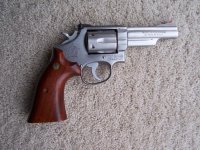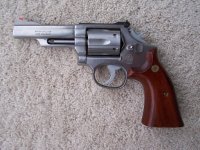"...That person clearly had little or no information on thermodynamics or heat transfer on those millisecond timescales, and clearly..."
____________________
I am not sure to what BB57 is referring, but I would like to see that data.
Omission of important data is at worst a minor oversight in a rather compelling argument IMHO.
It should be a matter of mathematics, right?
I do not think anyone said it was heat that was splitting the forcing cones.
The reference was to "blow-by gas pressures." Pardon me if I misunderstood.
We should have seen measurements of the 125 grain bullets compared to the measurements of the space between the base of those bullets and the point at which the barrel is "sealed" to even consider whether such "blow-by" is feasible. Furthermore, what would be the mechanism, as a matter of physics, of this blow-by extra pressure? How would it be measured?
Thanks BB57!
Kind Regards!
BrianD


